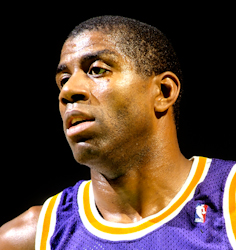Author: Ben Nussbaum
 On November 7, 1991, Magic Johnson announced that he had HIV. With that being said, he and other people who are diagnosed with HIV must waste no time in researching details like Medicare cost.
On November 7, 1991, Magic Johnson announced that he had HIV. With that being said, he and other people who are diagnosed with HIV must waste no time in researching details like Medicare cost.
It was a shocking juxtaposition: Magic was charming, athletic, the always smiling ambassador of his sport. More than anything, people felt that they knew Magic. He was 32 years old and had been in the spotlight for over a decade. He was one of the sporting world’s best-known athletes and frequently pitched soft drinks and candy bars on television.
HIV/AIDS was terrifying, but also, more than anything, mysterious. It was the unknowable, uncontrollable disease, still metastasizing into a worldwide epidemic that would show no regard for who was straight or who was gay. By 1991 the height of the paranoia over AIDS was over, but misinformation was still rampant.
In fact, Magic had been part of the nation’s consciousness longer than AIDS. Magic was well-known to college basketball fans in 1978, his freshman year at Michigan State, and really burst onto the national stage in 1979 when he led the Spartans to an NCAA championship. The term AIDS was first introduced in the summer of 1982, by which point Magic had won two NBA championships.
On June 12, 1991, Magic Johnson played all 48 minutes in the deciding Game 5 of the NBA Finals. Magic’s Lakers lost to Michael Jordan’s Chicago Bulls in a defining moment in the golden age of the NBA, when stars like Larry Bird, Magic, and Jordan pushed the league to levels of popularity unseen before or since. The early 1990s were as close as basketball would ever get to being the national game.
On that June night almost 30 million people in the United States watched a performance that was vintage Magic. He scored 16 points, grabbed 11 rebounds, and had 20 assists, a stat line that spoke volumes about his utterly unique abilities on the court.
That same year, AIDS became the leading cause of death in the USA for men aged 25-44.
While AIDS continues to kill, the worst days of the epidemic are over. The UN estimates that the spread peaked in 1996, with 3.5 million new cases, and that deaths peaked in 2004, with 2.2 million people dying from the disease.
Indeed, the pendulem may have swung too far: Instead of worries about getting AIDS from toilet seats, kisses, or even living in the same house as someone with the disease, experts worry that gay men in particular are desensitized to the disease. Magic himself said, “I’m good for the virus, and bad for it. Good because I’m doing well, and that I can go out and try and raise the awareness level, get people to go get tested … but on the flip side of that, people see that I’m doing well, so they’ve kind of relaxed on HIV and AIDS.”
Indeed, AIDS is still a massive killer: Over 30 million people worldwide have the disease, and only about 10 percent of these receive any medical treatment.
As for Magic, exactly no one thought he would become a mega-successful businessman, part owner of the Dodgers, and a sought-after speaker. More to the point, no one thought he’d be alive at all.
The iconic Sports Illustrated cover following his announcement said it all — the simple image of Magic midway through a hook shot, with the word Magic and no other clutter. That cover was not the announcement of a retirement. It was a farewell. Thankfully, a wildly premature one.
Comment |

 Share on Facebook
Share on Facebook
 Tweet
Tweet
 Add My Story
Add My Story






